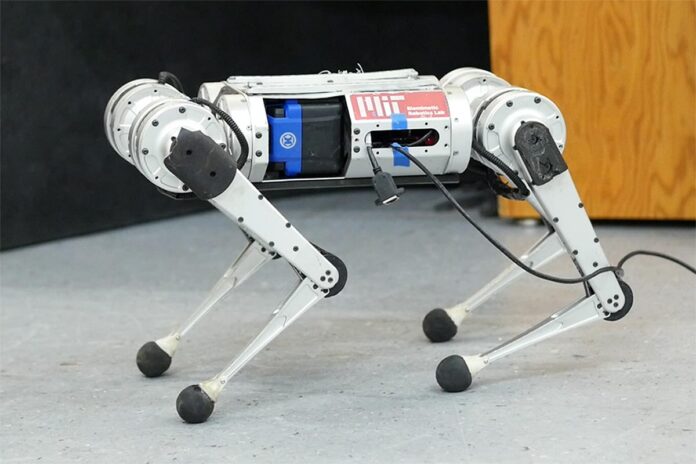Contrary to human engineered models of Machine Learning, MIT’s mini cheetah uses a self-learned AI algorithm based on trial and error.
Using its automated AI algorithm, the mini cheetah broke the record of fastest running robotic animal in AI robots history. The ability to run fastest is achieved by the concept of Reinforcement learning which is the learning of a certain behavior through continuously updating information. Feedback from the system helps in such learning.
The robot learns 100 days worth of experience in just three hours. It can learn to run at high speed, to adapt to uneven terrain, and run with a disabled leg. Amusingly, the cheetah could run to a maximum speed of 3.9 m/s.
The talented researchers of MIT’s Improtable AI Lab (part of Computer Science and AI laboratory CSAIL) achieved the feat. They were directed by MIT Assistant Professor Pulkit Agrawal and Institute of AI and Fundamental Interactions (IAIFI).
Pulkit and AI experts in his team know that running is harder than walking. Just as the case of human running, it means using the robot’s hardware to its full potential such as getting maximum torque from the motors.
Moreover, the ability to speedily recognize terrains such as ice and grass is another challenge.
Based on these challenges, building analytical models to support robo running is the hardest task. Previously MIT’s Cheetah 3 and mini cheetah had operated on human-built analytical models, but this time running required a “learn by experience” approach.
Camera on the robot captures images of terrain which are then fed to the neural network (also called controller) along with orientation of the cheetah’s body parts such as joint angles and body orientation. The neural network outputs the type of terrain and this information is fed to another controller. This controller is not a neural network, instead it solves physical equations to guide the robot’s motion.
AI is seeing advancement in technology with techniques that enable faster optimization of neural networks. For example, just recently Microsoft announced a new technique- the µ-transfer that enables faster ANN tuning.
Pakistan so far has not shown the true potential of what AI means for its digital development. Realizing this, Mr. Umer Chaudhary who is the co-founder and managing director of Dice Analytics, became an intermediate at the AI Summit 2022. The summit addressed the challenges and solutions for Pakistan’s successful take off in its AI journey.




